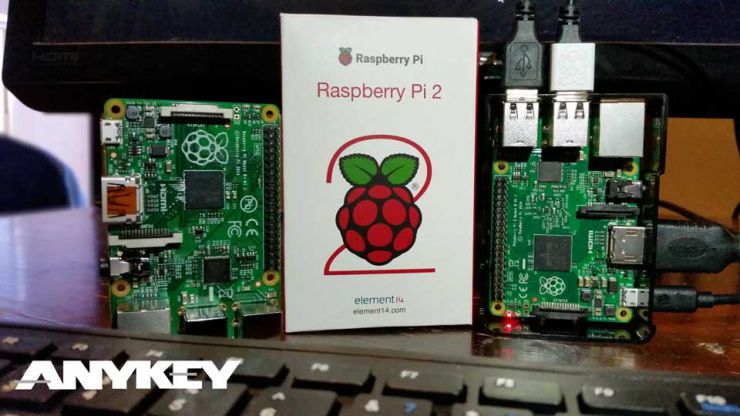
What is an Internet of Things (IoT) Proof of Concept? What is involved? What is the outcome? What's my upside? This article is an overview of answers to those nagging questions.
No doubt, with the pickup in the media about IoT and the value of IoT, many managers are asking the fundamental questions about the value IoT can bring to their own organization, and once that is understood... Where does one start?
What is my upside of an Iot proof of concept?
We tend to be business pragmatists, so unless an investment is going to produce a significant return, spend your money in other ways.
There are three cornerstone questions you need to ask yourself before making any investment, IoT or otherwise:
- What is the business problem I am facing?
- If I do nothing about the problem, what is the cost and impact to my business?
- How much return on investment is needed in order to make the effort worth my time?
Developing a clear business focus on the issue at hand will generate clear objectives for success of the investment and make it much easier to generate buy-in within your organisation. The focus will also keep your teams (internal and external) focused on a clear outcome and a clearly understood value that will come from overcoming the challenges and making that initial investment.
what steps are involved in a poc?

Minimum Viable Product (MVP) that effectively illustrates the value of the core functionality of the solution.
- Define the visual outcomes of reporting and dashboards in a way that the users could actually use the POC outcomes after the project.
- Integrate the sensors and data collection technologies so that the data can be consolidated and aggregated in real-time.
- Data should be setup to be processed according to defined business rules to qualify and quantify states and trends in the information that correspond to meaningful business intelligence.
- The data analytics should feed into visualization tools configured for the line of business staff to consume the data as alerts, charts, graphs and dashboards so that it's totally clear what is occurring in real-time.
how and where to start
Along your journey, you want to be cost smart about the approach.
Before you run, you need to walk, and before you walk you need to crawl. For instance, let's say you identify a business challenge that can be solved by preventative maintenance of 1000 of your things in your enterprise. In anticipation of success, you want to start small. That's where an IoT Proof of Concept comes in.
The IoT Proof of Concept (POC) is a very limited scope project that should essentially answer the usual questions of both technical and cost feasibility:
- Can our things work in an IoT way or not?
- How much will it cost to build, deploy, maintain 1000 endpoints (keeping to our example)?
- Can we actually prove that the upside potential is realistic?
Our advice to clients is to pick one to two dozen endpoints as the scope of an IoT POC. In every organization there are going to be different "kinds" or "models" of your things. For example:
- If you selected a series of pumps with unreliable performance in your organization as your target focus, you may note that the majority of your pumps are "Generation 5" but there are a number of older "Generation 2 and 3" pumps still in your environment.
- If you know that the Generation 2s and 3s will be around for a while yet, you may want to define your IoT POC scope as ~12 on the Generation 5 and ~12 on the Generation 2s.
- Skip the Generation 3s, because chances are the 2s and 3s are similar enough. You only have 2 generations to deal with and if you can make the oldest and newest work in your POC.
- Keep it simple for the POC.
Upon completion of the POC, the next step of the process would be to develop a limited scope Pilot. Suggestions on that topic will be explored in a future article, but as a guideline, an estimation of roughy 10-20% of the total scope (150-ish endpoints in a 1000) would be a good target prior to the commercialization to the entire enterprise.
conclusions
The value to the organisation interested in developing their own Internet of Things Proof of Concept is directly proportional to the value of solving a cost or operational challenge. If there isn't a solid business case to solve more problems or add more value over the cost of investment, it's not the way to go.
Given that a MVP is a core goal of the IoT POC, minimizing the investment at this stage is imperative. Leveraging a proven and structured process to guide through each phase of the POC should yield optimal results. Known and understood expectations, realistic timelines and quick turn-arounds on technology hiccups are all core to a successful Proof of Concept.
Iteration through the POC cycles promptly should develop organizational evidences to support the extension of the scope to a larger set of endpoints. The function of the POC should be viewed as experimental and 'research' with expectation for realistic business outcomes by mitigating risks.
ABOUT AnyKey
AnyKey was hand-picked as one of only a handful Microsoft Azure IoT and Analytics partners in the nation. Our close ties to Microsoft helped us hone our proprietary IoT POC process that delivers a completed POC in as little as a few weeks.
Our management consulting backbone puts us in the ideal spot to help your organize your selection criteria of ideal choices through strategy workshops and sessions. The investment of time exposes internal and external factors that will influence your strategy. Developing consensus on your strengths, weaknesses, opportunities and threats, you'll be positioned to clearly identify areas that an IoT POC could align as a contributing business strategy, not a distracting technical project.
If you're interested in finding out if an IoT POC is right for your organization, let us know and we'll be glad to contact you at your earliest convenience.
We specialize in making concepts a reality.
AnyKey is all about out-of-the-box thinking that leverage best practices. It has been the foundation of our core values since we opened our doors in 1997.
Our approach is to deliver value from day one. Go above and beyond. Not be afraid to say those things that need to be said or done that are in the best interest of the client.

- Define the visual outcomes of reporting and dashboards in a way that the users could actually use the POC outcomes after the project.
- Integrate the sensors and data collection technologies so that the data can be consolidated and aggregated in real-time.
- Data should be setup to be processed according to defined business rules to qualify and quantify states and trends in the information that correspond to meaningful business intelligence.
- The data analytics should feed into visualization tools configured for the line of business staff to consume the data as alerts, charts, graphs and dashboards so that it's totally clear what is occurring in real-time.
how and where to start
Along your journey, you want to be cost smart about the approach.
Before you run, you need to walk, and before you walk you need to crawl. For instance, let's say you identify a business challenge that can be solved by preventative maintenance of 1000 of your things in your enterprise. In anticipation of success, you want to start small. That's where an IoT Proof of Concept comes in.
The IoT Proof of Concept (POC) is a very limited scope project that should essentially answer the usual questions of both technical and cost feasibility:
- Can our things work in an IoT way or not?
- How much will it cost to build, deploy, maintain 1000 endpoints (keeping to our example)?
- Can we actually prove that the upside potential is realistic?
Our advice to clients is to pick one to two dozen endpoints as the scope of an IoT POC. In every organization there are going to be different "kinds" or "models" of your things. For example:
- If you selected a series of pumps with unreliable performance in your organization as your target focus, you may note that the majority of your pumps are "Generation 5" but there are a number of older "Generation 2 and 3" pumps still in your environment.
- If you know that the Generation 2s and 3s will be around for a while yet, you may want to define your IoT POC scope as ~12 on the Generation 5 and ~12 on the Generation 2s.
- Skip the Generation 3s, because chances are the 2s and 3s are similar enough. You only have 2 generations to deal with and if you can make the oldest and newest work in your POC.
- Keep it simple for the POC.
Upon completion of the POC, the next step of the process would be to develop a limited scope Pilot. Suggestions on that topic will be explored in a future article, but as a guideline, an estimation of roughy 10-20% of the total scope (150-ish endpoints in a 1000) would be a good target prior to the commercialization to the entire enterprise.
conclusions
The value to the organisation interested in developing their own Internet of Things Proof of Concept is directly proportional to the value of solving a cost or operational challenge. If there isn't a solid business case to solve more problems or add more value over the cost of investment, it's not the way to go.
Given that a MVP is a core goal of the IoT POC, minimizing the investment at this stage is imperative. Leveraging a proven and structured process to guide through each phase of the POC should yield optimal results. Known and understood expectations, realistic timelines and quick turn-arounds on technology hiccups are all core to a successful Proof of Concept.
Iteration through the POC cycles promptly should develop organizational evidences to support the extension of the scope to a larger set of endpoints. The function of the POC should be viewed as experimental and 'research' with expectation for realistic business outcomes by mitigating risks.
ABOUT AnyKey
AnyKey was hand-picked as one of only a handful Microsoft Azure IoT and Analytics partners in the nation. Our close ties to Microsoft helped us hone our proprietary IoT POC process that delivers a completed POC in as little as a few weeks.
Our management consulting backbone puts us in the ideal spot to help your organize your selection criteria of ideal choices through strategy workshops and sessions. The investment of time exposes internal and external factors that will influence your strategy. Developing consensus on your strengths, weaknesses, opportunities and threats, you'll be positioned to clearly identify areas that an IoT POC could align as a contributing business strategy, not a distracting technical project.
If you're interested in finding out if an IoT POC is right for your organization, let us know and we'll be glad to contact you at your earliest convenience.
We specialize in making concepts a reality.
AnyKey is all about out-of-the-box thinking that leverage best practices. It has been the foundation of our core values since we opened our doors in 1997.
Our approach is to deliver value from day one. Go above and beyond. Not be afraid to say those things that need to be said or done that are in the best interest of the client.
